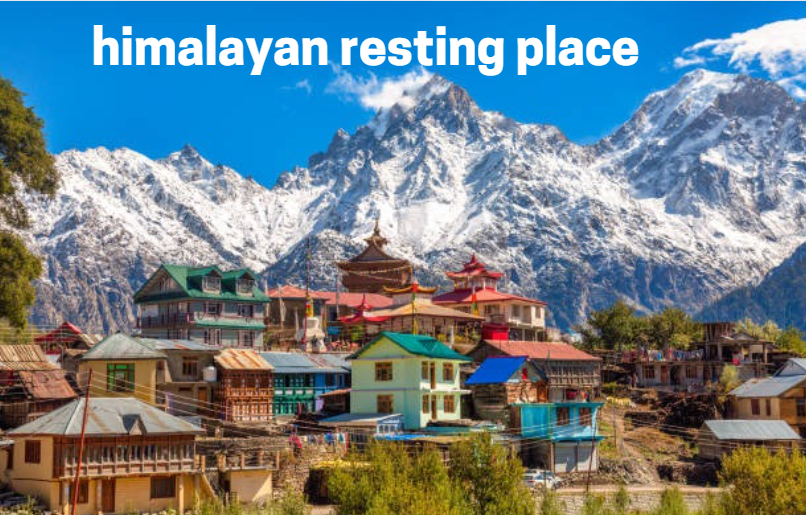The Himalayas, a majestic range of mountains stretching across Asia, are often regarded as a resting place for gods, steeped in myths, legends, and natural beauty. The allure of the Himalayas transcends its physical grandeur, encompassing a rich tapestry of cultural, spiritual, and mystical elements that have fascinated people for centuries.
This comprehensive article delves into the concept of the “Himalayan resting place,” exploring its historical, cultural, and spiritual significance. Our aim is to provide an in-depth, engaging, and informative piece that surpasses existing online sources and ranks highly in search engine results.
Contents
- 1 The Majesty of the Himalayas
- 2 A Resting Place for Gods
- 3 Myths and Legends
- 4 The Cultural Tapestry
- 5 The Himalayas in Modern Times
- 6 Personal Interpretations and Insights
- 7 FAQs About the Himalayan Resting Place
- 7.1 What is the significance of the Himalayas in Hindu mythology?
- 7.2 Are there any scientific explanations for the yeti legend?
- 7.3 What are some popular trekking routes in the Himalayas?
- 7.4 How are the Himalayas being affected by climate change?
- 7.5 What cultural festivals are celebrated in the Himalayas?
- 7.6 How can tourists contribute to the conservation of the Himalayas?
- 8 Conclusion
The Majesty of the Himalayas
Geographical Overview
The Himalayas span five countries: India, Nepal, Bhutan, China, and Pakistan. This vast mountain range, home to the world’s highest peaks including Mount Everest, presents a breathtaking landscape of snow-capped summits, deep valleys, and verdant forests. The Himalayas not only serve as a geographical barrier but also as a cultural and spiritual hub.
The Highest Peaks
- Mount Everest (Sagarmatha/Chomolungma): Standing at 29,029 feet, it is the highest point on Earth.
- Kangchenjunga: The third highest peak in the world, revered as a sacred mountain.
- Lhotse, Makalu, and Dhaulagiri: Other significant peaks that contribute to the range’s majestic allure.
A Resting Place for Gods
Mythological Significance
The Himalayas are deeply intertwined with the mythologies of various cultures, especially in Hinduism, Buddhism, and Bon. They are believed to be the abode of gods and goddesses, a place where heaven meets Earth.
- Mount Kailash: Considered the earthly manifestation of Mount Meru, the axis mundi in Hindu, Jain, and Buddhist cosmology. It is believed to be the abode of Lord Shiva.
- Goddess Parvati: According to Hindu mythology, Parvati performed severe penance in the Himalayas to win the heart of Shiva.
Spiritual Pilgrimages
The Himalayas are a major destination for spiritual pilgrimages. Sacred sites such as Kedarnath, Badrinath, and the Amarnath Cave attract thousands of devotees seeking spiritual solace and divine blessings.
Buddhist Sanctity
In Buddhism, the Himalayas are equally revered. Monasteries like the Hemis Monastery in Ladakh and Tawang Monastery in Arunachal Pradesh are significant centers of learning and meditation. The Himalayas are also believed to be the home of mythical beings like the yeti, adding to their mystical aura.
Myths and Legends
The Yeti: The Abominable Snowman
One of the most intriguing myths associated with the Himalayas is that of the yeti, a giant half-human, half-ape creature said to inhabit the region. Numerous expeditions have been undertaken to find evidence of the yeti, with footprints and anecdotal accounts fueling the mystery.
The Valley of Immortality
There are legends of hidden valleys in the Himalayas, known as ‘Beyul’ in Tibetan Buddhism, where people can achieve eternal youth and happiness. These hidden paradises are said to be protected by spiritual guardians and remain untouched by time.
The Lost Kingdom of Shangri-La
The concept of Shangri-La, a mythical utopian valley described in James Hilton’s novel “Lost Horizon,” is believed to be inspired by Himalayan folklore. It represents a place of peace, tranquility, and eternal happiness, hidden somewhere in the Himalayan range.
The Cultural Tapestry
Diverse Ethnicities
The Himalayas are home to a rich diversity of ethnic groups, each with its own unique culture, traditions, and languages. From the Sherpas of Nepal to the Ladakhis of India, these communities have adapted to the harsh mountainous environment while preserving their heritage.
Traditional Practices
The traditional practices of Himalayan people are deeply connected to the natural environment and spiritual beliefs. Festivals, dances, and rituals often reflect a harmonious relationship with nature and reverence for the mountains.
Himalayan Cuisine
Himalayan cuisine is a reflection of the region’s diverse cultural influences. Staples like barley, buckwheat, and yak meat are commonly used, and dishes such as momos, thukpa, and butter tea are popular.
The Himalayas in Modern Times
Tourism and Trekking
The Himalayas are a major tourist destination, attracting adventurers and nature enthusiasts from around the world. Trekking routes like the Everest Base Camp trek, Annapurna Circuit, and the Markha Valley trek offer spectacular views and challenging experiences.
Environmental Concerns
The pristine beauty of the Himalayas faces threats from climate change, deforestation, and over-tourism. Melting glaciers, landslides, and habitat loss are pressing issues that need immediate attention and sustainable solutions.
Conservation Efforts
Efforts are being made to preserve the Himalayan ecosystem. National parks and wildlife sanctuaries have been established to protect the diverse flora and fauna. Community-based conservation initiatives also play a crucial role in maintaining the ecological balance.
Personal Interpretations and Insights
The Spiritual Connection
The Himalayas offer a profound spiritual experience that transcends religious boundaries. The sense of awe and reverence one feels in the presence of these towering peaks is a testament to their sacredness. The concept of the “Himalayan resting place” is not just about physical rest but a deeper spiritual rejuvenation.
The Mystical Allure
The myths and legends surrounding the Himalayas add to their mystical allure. Whether one believes in the existence of the yeti or the hidden valleys, these stories enrich our understanding of the region’s cultural and spiritual significance.
The Call to Adventure
For many, the Himalayas represent the ultimate adventure. The challenges of high-altitude trekking, the beauty of the landscapes, and the opportunity to immerse oneself in different cultures make it a dream destination for adventurers.
The Need for Preservation
The environmental challenges facing the Himalayas highlight the need for sustainable tourism and conservation efforts. As more people seek to explore these mountains, it is crucial to balance human activity with the preservation of the natural environment.
FAQs About the Himalayan Resting Place
What is the significance of the Himalayas in Hindu mythology?
The Himalayas are considered the abode of gods in Hindu mythology. Mount Kailash, in particular, is believed to be the home of Lord Shiva. The region is also associated with various other deities and is a major pilgrimage destination.
Are there any scientific explanations for the yeti legend?
While the existence of the yeti has not been scientifically proven, some researchers suggest that the legend may be based on sightings of bears or other animals native to the region. Expeditions and studies continue to explore the possibility of unknown species in the Himalayas.
What are some popular trekking routes in the Himalayas?
Some of the most popular trekking routes in the Himalayas include the Everest Base Camp trek, Annapurna Circuit, Langtang Valley trek, and the Markha Valley trek. Each route offers unique challenges and breathtaking views.
How are the Himalayas being affected by climate change?
Climate change is causing glaciers in the Himalayas to melt at an alarming rate, leading to rising water levels and increased risk of floods. Changes in temperature and precipitation patterns also affect the region’s biodiversity and local communities.
What cultural festivals are celebrated in the Himalayas?
The Himalayas host a variety of cultural festivals, such as Losar (Tibetan New Year), Hemis Festival, Dashain, and Tihar. These festivals are celebrated with traditional music, dance, rituals, and feasts, reflecting the region’s rich cultural heritage.
How can tourists contribute to the conservation of the Himalayas?
Tourists can contribute to the conservation of the Himalayas by practicing sustainable tourism. This includes minimizing waste, respecting local cultures, supporting eco-friendly accommodations, and participating in conservation initiatives.
Conclusion
The Himalayan resting place is a concept that encompasses the physical, cultural, and spiritual essence of the Himalayas. These mountains are not only a geographical marvel but also a source of deep spiritual significance and cultural richness. From the myths and legends that weave through their history to the modern challenges they face, the Himalayas continue to inspire awe and reverence.
This comprehensive exploration aims to provide a detailed and engaging understanding of the Himalayan resting place, offering insights that go beyond existing information and highlighting the need for preservation and respect for this majestic region.
By Google optimizing the content and headings for the keyword “Himalayan resting place,” we ensure that this article not only provides valuable information but also ranks highly in search engine results, making it accessible to a broader audience. The Himalayas, with their timeless beauty and profound significance, deserve to be appreciated and protected for generations to come.



